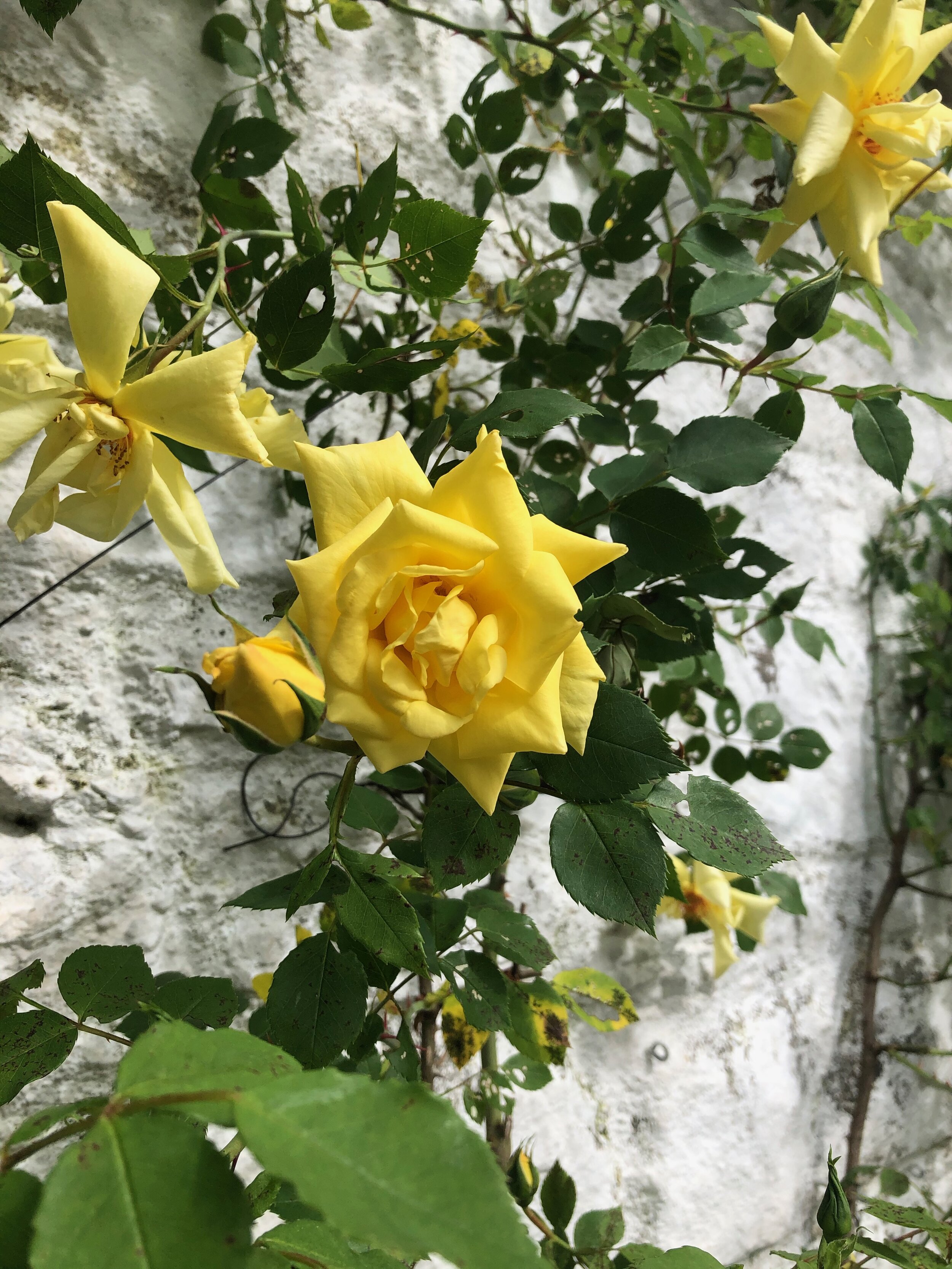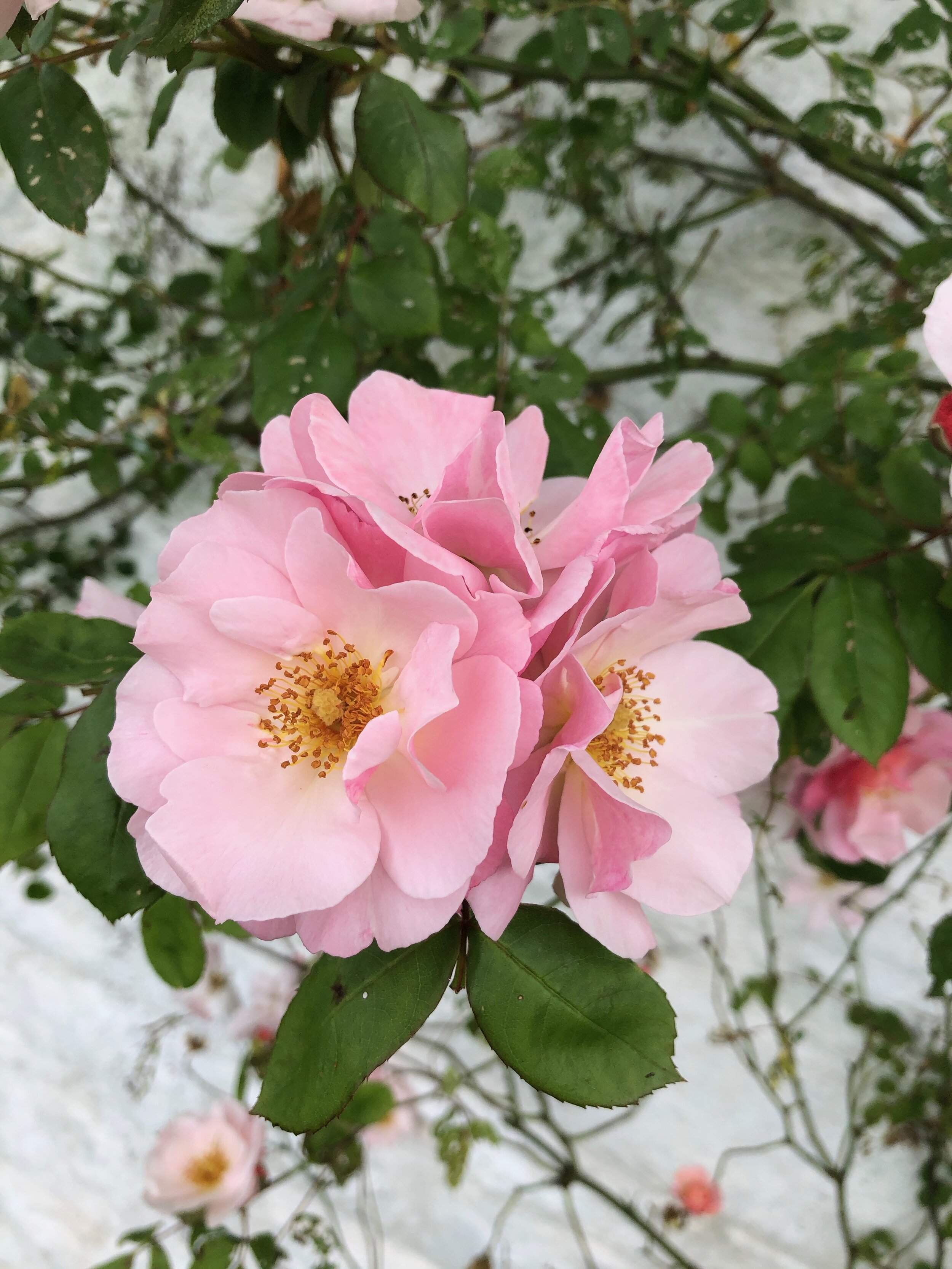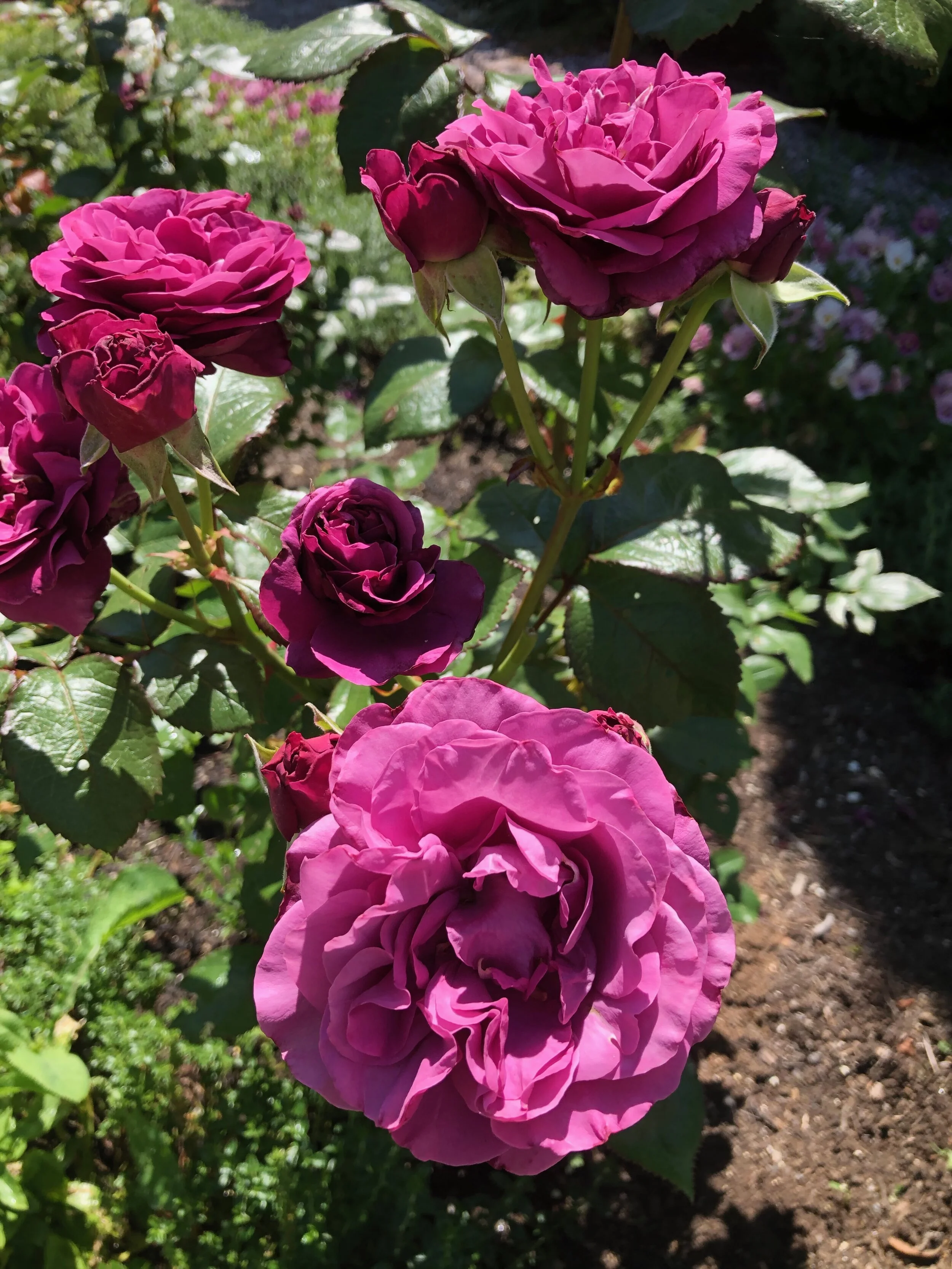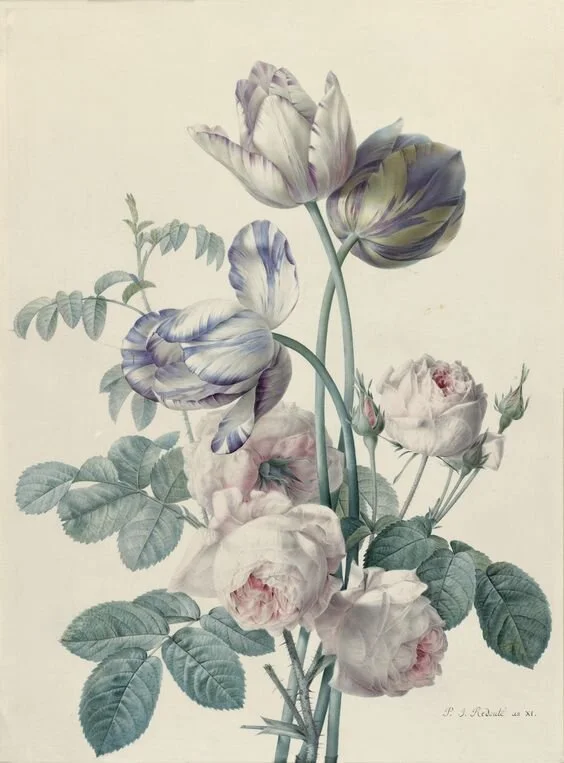Coming up Roses
Emily Ellis
June is the month of roses – a plant that has been entangled in human history and culture for millennia.
Roses, most species of which are native to Central Asia, have been around for as long as 35 million years, based on fossil evidence. It didn’t take long for our early ancestors to take an interest in the sweet-smelling, symmetrical flower, and wild roses were likely used for medicinal purposes before the first cultivated roses sprang up in the gardens of China around 5,000 years ago. Since then, the flower has established itself as one of the world’s most ubiquitous symbols of love and beauty, taking root in art, literature, politics, and religion (as well as many backyard gardens!)
Rather than attempt to encompass the weighty world history of this fascinating flower in just one blogpost, we’re sharing several interesting facts about the rose to celebrate all the roses blooming this month. Scroll down to learn more, and to read about some of the rose varieties we grow in the Oak Spring Formal Garden.
“The Roses of Heliogabalus'“ by Sir Lawrence Alma-Tadema, 1888. Image from Wikimedia Commons.
They were once (possibly) used as murder weapon. In Western culture, the rose’s connection with love, beauty and desire likely first took root in ancient Greece, after the flowers were linked to the goddess Aphrodite in legends and later with her Roman counterpart, Venus. In ancient Rome, several species were widely cultivated for use as sweet-smelling decor for the upper classes (particularly in feasts and celebrations) as well as in medicinal and cosmetic oils and waters. They were even hung up during important political meetings to indicate confidentially, leading to the term sub rosa (under the rose.)
But perhaps the most infamous historical use of roses came from hedonistic teenage emperor Heliogabalus, who ruled Rome briefly (and badly) in the third century. There are a lot of scandalous stories from Heliogabalus’ four-year reign, but the most notorious is when he dumped a mountain of rose petals onto unsuspecting orgy guests, suffocating several unfortunate, drunken individuals under the deluge.
The story, which was documented in a tabloid-esque ancient Roman publication, should be taken with a grain of salt, but it did inspire an impressive painting from British artist Sir Lawrence Alma-Tadema centuries later - further helping to establish the rose as a symbol of love and sex.
A Valentine’s Day-red rose climbs the clock in the Oak Spring Formal Garden.
Americans buy over 1 billion roses every year. Ever found yourself picking up an inexpensive Valentine’s bouquet from your local pharmacy or grocery store? Chances are, those pretty, scentless red roses were grown in Colombia. In the 1990s, the U.S. congress passed a trade act that would limit duties on exports from several South American countries in an effort to disrupt cocaine trafficking. The flowers are now one of Colombia’s biggest exports, partly due to the U.S.’s huge appetite for affordable representations of love in February, a time of year when it is difficult for growers in the U.S. to meet the demand.
This shift in the rose trade is not without its thorns, as it has caused debate over the treatment of Colombian workers in the industry, the pollution caused by chemicals used in the large-scale production, and a plummet in business for small-scale growers and florists in the U.S. - proving that the symbolism of roses still holds sway over global affairs.
Definitely not blue, but these rugosa growing at Oak Spring are certainly lovely!
It took 20 years of research to produce a blue rose. There are 150 species of roses worldwide and thousands of hybrids that come in a rainbow of colors, but it wasn’t until 2018 that scientists from the Tianjin University and the Chinese Academy of Sciences engineered the world’s first blue rose.
Blue roses have long been somewhat of a white whale for researchers, as roses lack the gene necessary to produce a true blue hue, even through cross-breeding. Calling something a “blue rose” in English means that it is unattainable, and a Chinese legend even centers around the impossibility of the flower.
However, it was not unattainable for scientists at Tianjin, who, after decades of research, managed to turn a white rose partially blue by injecting engineered bacteria containing blue pigment-producing genes into its petal. However, it will likely be a while longer before these flowers are available for your garden: the next step is for researchers to engineer the roses to create the color themselves without injections.
Pierre-Joseph Redoute. Tulips and roses, 1811. Watercolor on vellum.
One of history’s greatest rose gardens has an Oak Spring Garden Library connection. We’re not talking about the Rose Garden at the White House, re-designed by Bunny Mellon in the 1960s (although that is also a beautiful rose garden!) but the expansive masterpiece created by Empress Josephine Bonaparte, the wife of Napoleon, at the turn of the eighteenth century.
Josephine was a passionate lover of roses, and collected at least 250 different roses from all over the world to add to the gardens of the Chateau Malmaison.
While most of the garden was destroyed during the Franco-Prussian war decades later, we know about many of the flowers that flourished there thanks to famed botanical illustrator Pierre-Joseph Redoute. Josephine hired Redoute to meticulously paint her roses in his watercolor book, Les Roses, which contains 168 colored plates and is still considered a classic reference for different rose types. The Oak Spring Garden Library houses a complete collection of his printed works, including the three-volume Les Roses and a number of original drawings.
Roses at Oak Spring
By Head Gardener Judy Zatsick
Mrs. Mellon loved roses. Much like the introduction of Knock Out roses of our day, great innovations were occurring in rose breeding during her lifetime. She took full advantage of the beautiful and fragrant roses that resulted.
Mrs. Mellon created a lovely walled garden that embraced the back of the residence. In addition, miles of stone walls were constructed on the extensive grounds-- perfect supports for the climbing roses that were so popular at the time. Climbing roses exhibit a carefree expression, adding movement and texture, accentuating curves and creating depth in the garden. With her keen eye for structure and design, Mrs. Mellon used climbing roses to great effect in her garden.
Records show that she would peruse the newest rose catalogues and select many each year to be trialed at her various residences.
Of all the wild roses discovered in the last century, two are most important in the development of today's modern climbing roses: R. multiflora and R. wichuraiana. Hybridizers were keen to marry vigor, hardiness, adaptability and disease resistance of these two roses with the color and full flowers of other species. Wuchuraianas are parents of some of the most popular climbing roses including 'Dorothy Perkins', the stunning 'Alberic Barbier', 'Albertine' and 'New Dawn'.









